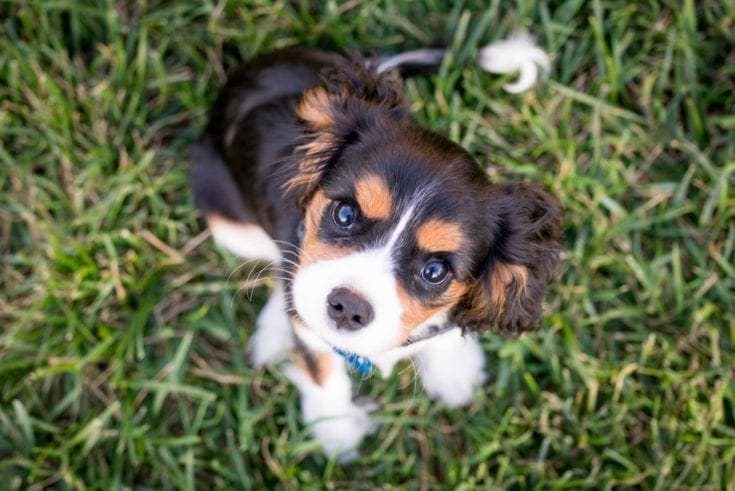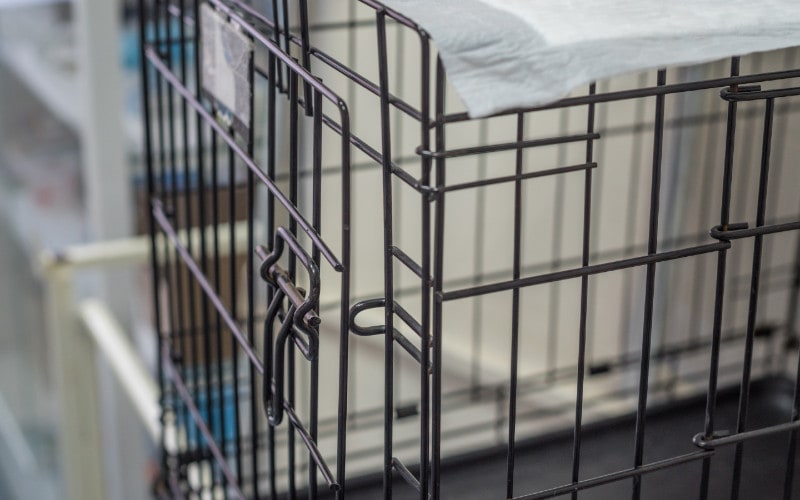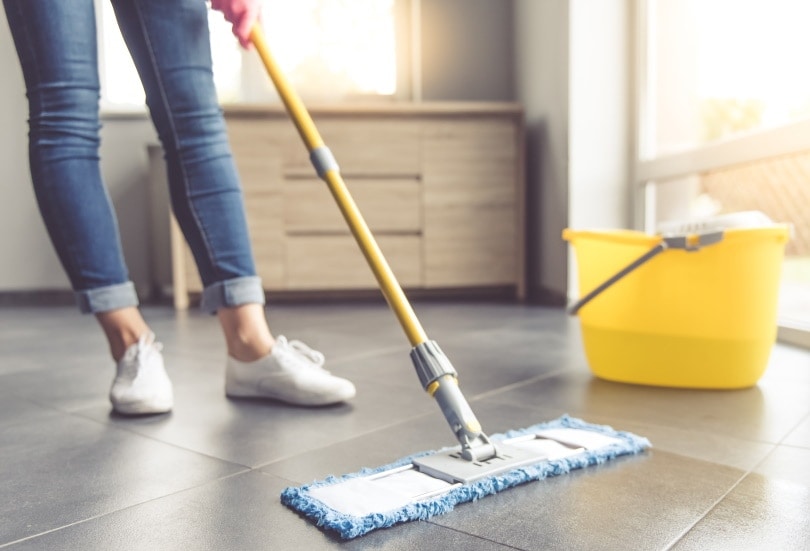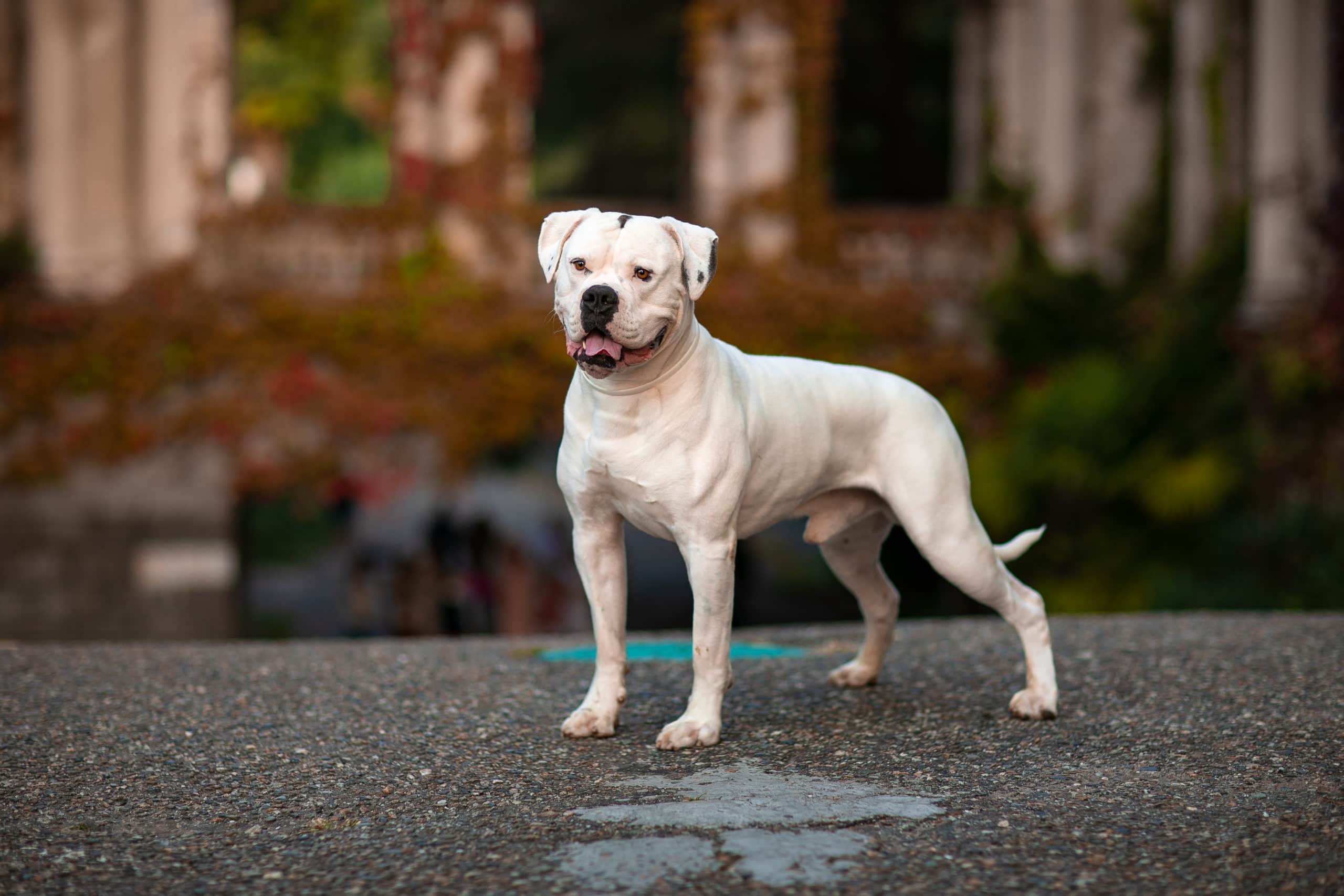How to Potty Train a Cavalier King Charles Spaniel: 10 Helpful Tips

Updated on

It’s impossible not to fall in love with a Cavalier King Charles Spaniel. Those long eyelashes, big brown eyes, and silky soft coats are just too much to resist. But before you can enjoy all the cuddles (and there will be many), you need to get your pup potty trained.
Luckily, Cavaliers are relatively easy to train. Today’s toy-sized Cavalier Spaniels are descended from sporting dogs, after all, which means they’ve been working alongside humans for centuries. As a result, most Cavaliers are receptive to commands and combined with their natural intelligence, this makes them quick learners.
However, that doesn’t mean potty training will be a piece of cake. No dog is born knowing they shouldn’t pee in the house. But with time, patience, and consistency on your part (plus the potty tips we’re sharing below), you’ll soon have a Cavalier that’s house trained in no time.
Potty Training Your Cavalier King Charles Spaniel: What You’ll Need
Potty training any puppy is messy business, so you’ll need to stock up on a few essentials before you get started. The items below will make it easier to keep the mess under control and help your pup learn more quickly:
- Puppy Pads: If you want to avoid accidents on your carpets and floors, puppy pads are a necessity. Place them in strategic locations around the house (in front of doors, next to the sofa, etc.), and be sure to praise your Cavalier when they use them. You can also use newspapers and old rags if you like.
- Leash and Collar: This will make it easier to keep an eye on your Cavalier as they’re getting used to their potty routine.
- Enzyme Cleaner: Puppies will keep doing their business in the same spot if it smells like their urine. Pet enzyme cleaners are formulated to break down the odor-causing molecules in urine, so it’s much less likely your Cavalier will be attracted to the same spot twice.
- Puppy Treats: It’s important to reward your Cavalier for urinating and defecating in the right spot, so they’ll learn that this is the desired behavior. Treats are the perfect incentive. Choose high-protein, low-calorie options so you don’t have to worry about overfeeding your pup.
- Dog Crate: A crate can be a useful tool in potty training, as it will help your Cavalier learn to hold their bladder for longer periods of time. Dogs are den animals, and as such, they don’t like to soil their sleeping area. This instinct can be harnessed to help with potty training.

The 10 Tips for Potty Training a Cavalier King Charles Spaniel Puppy
It’s normal to feel frustrated or even angry when your puppy has an accident in the house. But remember that it’s difficult for your puppy, too. The period of time immediately after having been separated from its mother and littermates can be difficult. Be patient with yourself and your new family member.
With that said, below are the basic tips to potty training a Cavalier King Charles Spaniel puppy:
1. Set up their crate and designate a potty area before you bring your puppy home.
Potty training should begin from day one. Resist the urge to let your Cavalier pup sniff, run, and play all over your house when you bring them home. You’ll want to minimize the number of accidents that happen in the beginning.
Instead, set up their crate in a quiet area of your house with all their essentials: food, water, bedding, and toys. The crate itself should just be big enough for your Cavalier to stand up, turn around, and lie down comfortably. This will help them feel safe and secure in their new environment.
You’ll also want to set up a designated potty area for your Cavalier. This can be a spot in the yard, on a balcony, or even on a potty pad inside your house. It doesn’t have to be permanent yet, but it should be close enough so you can quickly take your Cavalier there when it’s time to go.

2. Establish a routine for your puppy.
Dogs are creatures of habit, so it’s important to establish a routine for your Cavalier from the start. This includes regular mealtimes, potty breaks, walks, and play sessions.
Following a routine can also make it easier for you to balance potty training with the rest of your schedule. Knowing when your Cavalier needs to go will help you better anticipate accidents and be prepared with praise or treats when they happen.
3. Take your Cavalier out frequently.
Puppies, especially toy breeds like Cavalier King Charles Spaniels, have small bladders. Before they hit 12 weeks of age, the muscles responsible for controlling their eliminations are still developing. Therefore, they’ll need to go out several times a day.
The Humane Society says that puppies can hold their bladder for about an hour for every month of their age. So, if you have a 3-month-old Cavalier puppy, they can likely hold it for about three hours.
Still, we recommend taking them out every hour or two (especially in the beginning) to avoid accidents.
You should also take them out during the following times:
- After eating or drinking
- After waking up from a nap
- After playing
- After training sessions
Once they’re a bit older and have more control over their bladder, you can start lengthening the time in between potty breaks.

4. Watch out for signs that your Cavalier needs to go.
In addition to taking them out on a regular schedule, familiarize yourself with the signs that your Cavalier needs to go potty. These can include:
- Whining
- Squatting
- Pacing
- Sniffing around
- Circling
If you see any of these signs, quickly take your Cavalier to their designated potty spot regardless of the time.
5. Keep your puppy on a tight leash—figuratively.
Until your Cavalier is fully potty trained, they should always be supervised or crated when they’re not in their designated potty spot.
That means keeping them on a leash or tether when they’re inside the house and not in their crate. This gives you more control over when and where they go, making accidents less likely to happen.

6. Remove their water dish an hour or two before bedtime.
To help your Cavalier make it through the night without having to go potty, make it a habit to take away their water bowl a couple of hours before they go to sleep. This will help minimize the chances of them waking you up in the middle of the night to go out.
It’s still a good idea to set up alarms during the night to take them out, just in case.
7. Praise your Cavalier for good potty habits.
Cavaliers love to please their humans, so they’ll be more likely to keep up good potty habits if they’re praised for doing so. Did they pee in the right spot? Make it a celebration! Give them lots of treats and praise, so they’ll learn to associate going potty with getting rewarded.

8. Never punish your Cavalier puppy for potty accidents.
Accidents WILL happen during potty training but never scold, hit, or punish your puppy for making them. This will only make them afraid of you and confused about what they’re supposed to do.
If you catch your Cavalier in the act, make a loud noise, like clapping your hands or saying “no” in a calm but firm voice, to startle them and get their attention. Then, take him or her immediately to the correct spot.
If you find a puddle or pile after the fact, simply clean it up and move on. Dogs don’t have the same concept of cause and effect that we do, so they won’t understand that their accident is what you’re angry about.
9. Clean all soiled areas completely.
Dogs have an incredibly powerful sense of smell, even when they’re puppies. If there’s even a hint of urine or feces left in an area, they’re likely to return to that spot to do their business again.
That’s why it’s crucial to clean up any accidents completely—and we mean completely. That means using a cleaner that will remove all traces of the odor, not just mask it with a strong scent.
You can buy pet enzyme cleaners specifically designed for this purpose. Follow the instructions, as some will require you to let the area air dry while others will need to be rinsed off.
Once the area is clean, be sure to block off any access to it, so your Cavalier can’t sneak back in and have another accident.
If you don’t have a pet enzyme cleaner, you can make your own by mixing one part white vinegar with three parts water.

10. Get everyone on the same page.
Potty training your Cavalier will be much easier if everyone in the house is on board with the plan. If you live with other people, such as family or roommates, make sure they know the rules and are willing to help enforce them.
It can be helpful to post a reminder in a common area, such as the kitchen or living room, to remind everyone of the potty training rules.
You should also make sure any babysitters, dog walkers, or other pet caretakers are aware of your potty training routine.
Final Thoughts
Potty training is one of the most difficult parts of bringing home a new puppy. But it is also one of the most rewarding. The first time you see your Cavalier pee in the correct place will be one of the proudest moments of your life!
It doesn’t have to be too complicated, either. Set a routine and follow it, provide plenty of opportunities for potty breaks, and be consistent with rewards and cleaning up accidents, and you’ll have a housetrained Cavalier before you know it. Good luck!
Featured Image Credit: Austin Kirk, Unsplash












